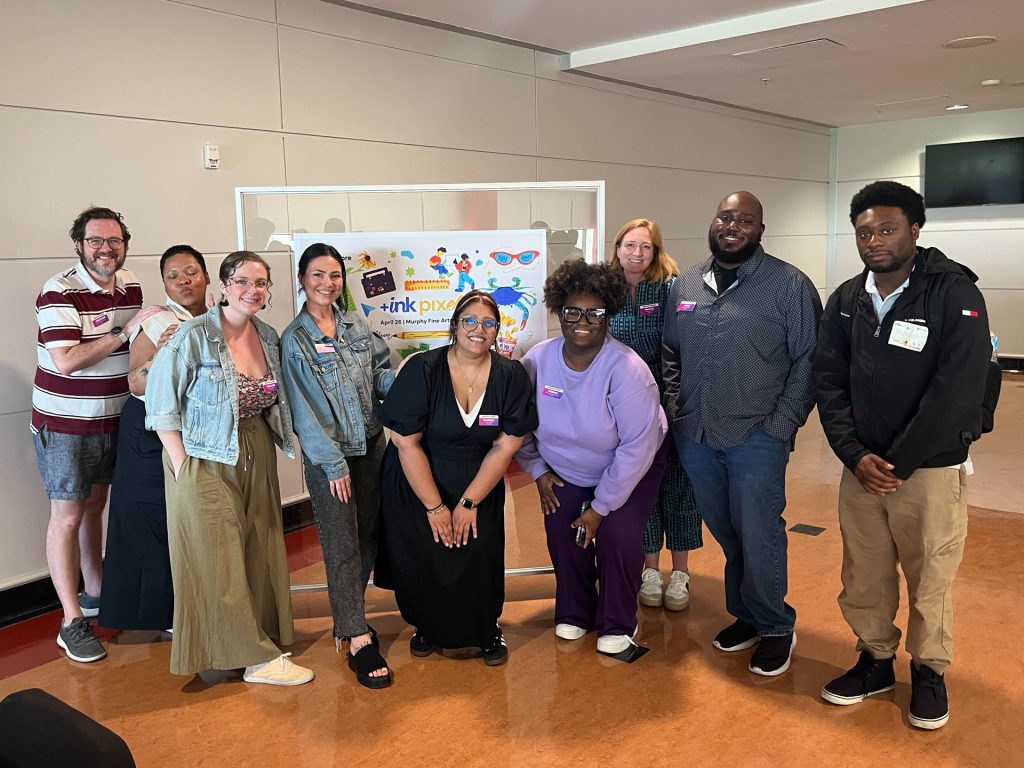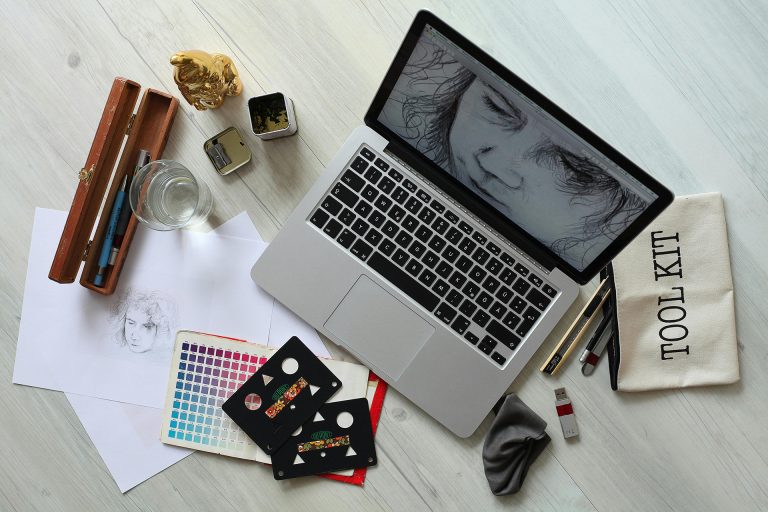If you missed the Ink & Pixels Designer Panel last week, we highly recommend you go back and watch the replay. “If I Knew Then What I Know Now” focused on honest, practical advice for new designers as well as those of us in a career transition, on how to navigate the job market during these uncertain times.
We had a vibrant community-led discussion with three experienced designers, who shared unique insights and tips from different perspectives across the design field. Our panelists opened up and gave us a raw and authentic view into their professional lives, as did members of our community who came together to share resources and provide emotional support.
For those who did make it, thank you for your incredible energy and engaging questions. We wish we could’ve answered them all before our brief time ran out. For those of you hungry for more, here’s the next best thing. Our three expert panelists are back to answer a few more of your most burning questions.
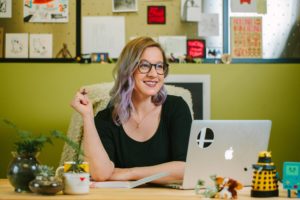 Emilee Beeson, Designer, and Illustrator
Emilee Beeson, Designer, and Illustrator
emileebeeson.com
Etsy | Instagram
Emilee Beeson is a graphic designer and illustrator with a broad creative skill set, contagious enthusiasm, and relentless drive for growth and learning.
What’s one non-design job you had that taught you something important? What did it teach you?
In the summers before I graduated from college I would work as much as I could to pay for my apartment and other expenses during the school year. At one point I was working three jobs. I started at 4 am at a gym smoothie stand, then had a shift at Chipotle, and in the evenings I worked at Coldstone Creamery. While it’s not a unique experience it makes me so grateful to have found a place in the design world. Having a good-paying job that aligns with your passions is such a privilege and it really helps me to find joy in my work when things get tough.
How can we use design for advocacy and social justice initiatives?
I am sure there is a bigger picture answer to this but I want to speak to the actionable side of it. Design is incredibly expensive so your skills can be a huge asset to organizations that can’t afford it. Social justice organizations and advocacy groups need logos, T-shirts, posters, print materials, websites, and social media assets just like any other group or business. A small and actionable way to use design is to volunteer your time and skills to these groups. Reach out to them and see how you can help. There are also a few events locally that you can participate in like the MICA Grassroots Design Fest and Make-A-Mark Baltimore.
As a job candidate, what is the appropriate amount of follow up, and how can you stand out and stay memorable among other applicants?
Unfortunately, there is no magic formula for the amount of follow up you should do. It’s awkward no matter what and each job situation is different. The reality is that your entire world might be hinging on that response and theirs probably isn’t. I personally think a phone call is a bad idea but a quick email doesn’t hurt if a considerable amount of time has passed.
I have found a good way to stand out is to have a leave behind for your interview. For me, that means a small package with my business card, resume, art prints, zines, and stickers. You are usually being interviewed by other designers/creatives that geek out about the same stuff you do. Giving them something physical that might hang around the office is a good way to stand out. I have also been on the receiving end of these leave-behinds and they are always a total delight. Make sure you bring extra in case someone wasn’t able to make it to your interview.
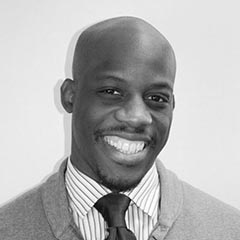 Perry Sweeper, Design Strategist
Perry Sweeper, Design Strategist
Perry Sweeper is a 2020 doctoral candidate at the University of Baltimore, studying Information and Interaction Design.
What was your first step after graduation?
My first step after graduation was to take a comprehensive look at the classes that I completed and inventory the knowledge/skill-set that I gained during matriculation. I wanted to get a good understanding of the skills I acquired and the work that I produced. Then I could effectively communicate my experience to seek out the right next career steps. It was very important to me to be able to view my career in a multidimensional way: past, present, and then future.
What’s one non-design job you had that taught you something important? What did it teach you?
The non-design job that taught me something important was working as a shoe salesman. There was a mother that came into the store with her son who was looking for new shoes to wear to an important job interview. To help them I had to deal with many competing needs. The mother primarily sought a presentable shoe, at a good price point, that would make him look professional and would work for him later once he got the job. But for the son, his main concern was to find shoes that were cool and that his friends would like. Because I knew the product well, I helped them find the right shoe in a sea of options and provided them with complimentary items like the right belt, socks, and shoe care. I also met my sales goals for the day and followed the company standards. When you do your job well in sales, you increase the possibility that a customer will come back for a second, third, or fourth pair. It is also possible that their family will become lifetime customers and ambassadors for your brand. If you do enough of this, you could get even get a company bonus.
Design jobs require the uncanny ability to please multiple stakeholders, be detail-oriented, use effective communication, creativity, and sometimes serve angry customers. Much like retail and customer service jobs. Retail can be tough, especially during the holiday season. At the least, it can be a motivator to one day quit and move into that coveted design job you desire 😉
What kind of professional development should I be pursuing while in graduate school? Is it better to just focus on grad school until graduation?
In my opinion, it is important to focus on school while you are enrolled. School can require an incredible investment of time, energy, and money. It is in one’s best interest to do well. However, I believe in the value of experiential learning opportunities during academic breaks. They provide a way to apply all that one has learned during the semester in a real-life scenario. The right combination of theory and practice can lead to growth and career progression.
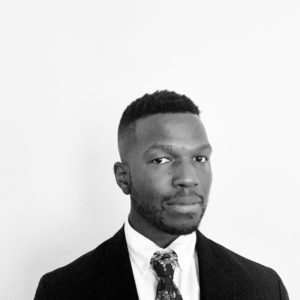
Alex Reynolds, Sr. Recruiter
cargocollective.com/alexanderreynolds
Instagram
Alexander is a Sr. Recruiter with Robert Half and Specializes in placing candidates that concentrate in the technology and creative fields.
What kind of professional development should I be pursuing while in graduate school? Is it better to just focus on grad school until graduation?
It entirely depends on the type of position you are looking to pursue. The easiest way to find out what kind of professional development that can assist in your job search is to look at job descriptions from industries/companies you would want to work for. They list the various software, certifications, or applications they find desirable in their candidates. – I would also seek to develop your professional network by going to Meet-Up Groups, Webinars, or Social Events. If you are more unsure about the kind of positions you are interested especially in the design/marketing space the main focuses (in a more general sense) tend to be Adobe Photoshop/Illustrator/InDesign, Social Media Management Tools, Email Management Tools, and Microsoft Office/Google Suite.
As a job candidate, what is the appropriate amount of follow up, and how can you stand out and stay memorable among other applicants?
The appropriate amount of follow up for a position you applied for is generally around 1 week if you haven’t heard any feedback – unless they have told you a specific time/date. The best way to stand out is to make sure your resume is able to speak to your skillset and experience and tie it back to a metric or result. Keep your resume to the point (bullet points tend to work best) because recruiters and hiring managers have to sort through a lot of resumes (sometimes in the hundreds) A lot of times hiring managers will just CTRL-F (Find Keywords highlighted in your resume). Make sure you are able to talk about how you have used a software, programming language, or tool and provide an example. A simple list at the bottom of the software you’ve used with no context is not enough.
How important do you feel a Masters’s degree is in the design field these days? Should I pursue it after graduation, or should I focus on looking for jobs and/or clients?
I think a Masters’s Degree tends to be more important if you are interested in teaching – or if you are looking at a specific field that requires one. Most design positions tend to look at a Bachelor’s degree or years of equivalent experience along with a solid portfolio and experience.
